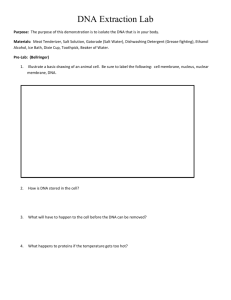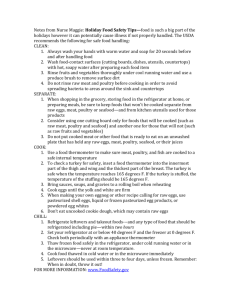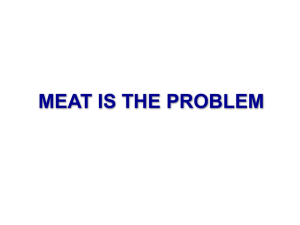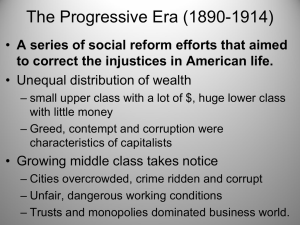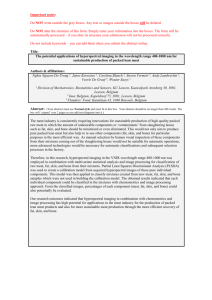Enzymes: Meat Tenderizer Lab Worksheet
advertisement
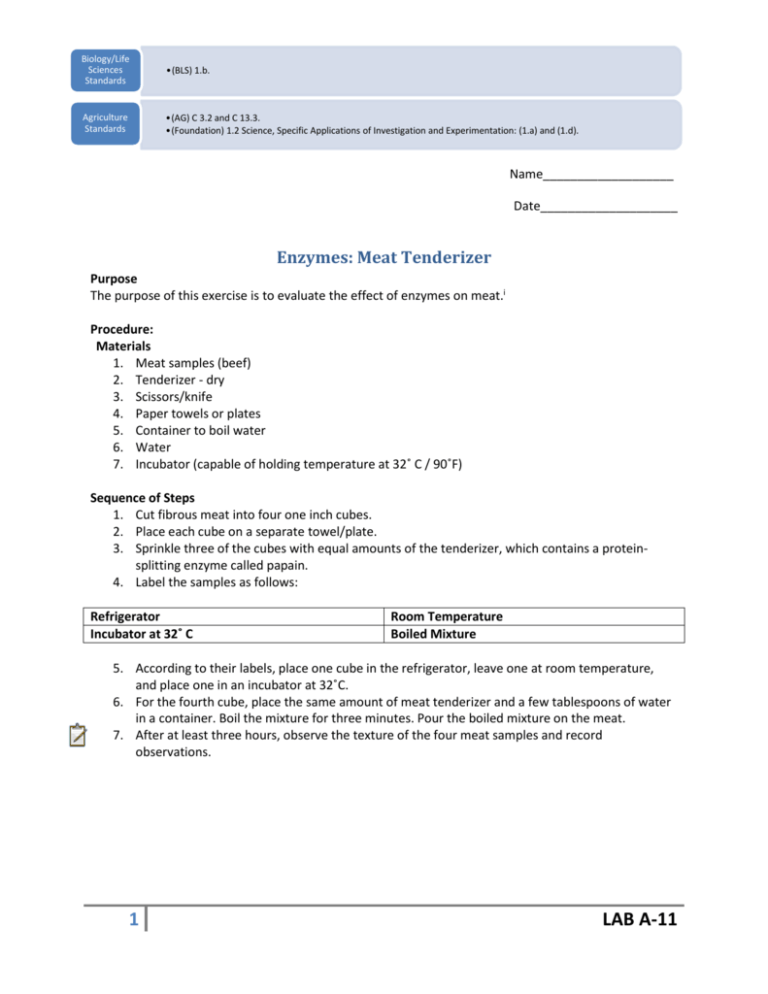
Biology/Life Sciences Standards •(BLS) 1.b. Agriculture Standards •(AG) C 3.2 and C 13.3. •(Foundation) 1.2 Science, Specific Applications of Investigation and Experimentation: (1.a) and (1.d). Name___________________ Date____________________ Enzymes: Meat Tenderizer Purpose The purpose of this exercise is to evaluate the effect of enzymes on meat.i Procedure: Materials 1. Meat samples (beef) 2. Tenderizer - dry 3. Scissors/knife 4. Paper towels or plates 5. Container to boil water 6. Water 7. Incubator (capable of holding temperature at 32˚ C / 90˚F) Sequence of Steps 1. Cut fibrous meat into four one inch cubes. 2. Place each cube on a separate towel/plate. 3. Sprinkle three of the cubes with equal amounts of the tenderizer, which contains a proteinsplitting enzyme called papain. 4. Label the samples as follows: Refrigerator Incubator at 32˚ C Room Temperature Boiled Mixture 5. According to their labels, place one cube in the refrigerator, leave one at room temperature, and place one in an incubator at 32˚C. 6. For the fourth cube, place the same amount of meat tenderizer and a few tablespoons of water in a container. Boil the mixture for three minutes. Pour the boiled mixture on the meat. 7. After at least three hours, observe the texture of the four meat samples and record observations. 1 LAB A-11 Observations 1. Illustrate your observations after the samples have set for at least 3 hours. Refrigerator Incubator at 32˚ C Room Temperature Boiled Mixture 2. Describe, using complete sentences, your observations. Compare and contrast the samples. 3. Explain your observations. Why do you think this happened? 2 LAB A-11 4. Define enzyme: 5. Identify at least two ways enzymes can be beneficial to agricultural producers or processers. 6. Identify at least two ways enzymes can be detrimental (harmful) to agricultural producers or processers. 7. What factors can slow or speed up the activities of enzymes? i Mendes, Laura (2008). Meat Tenderizer, Lab. St. Helena High School Agriculture Department. 3 LAB A-11



